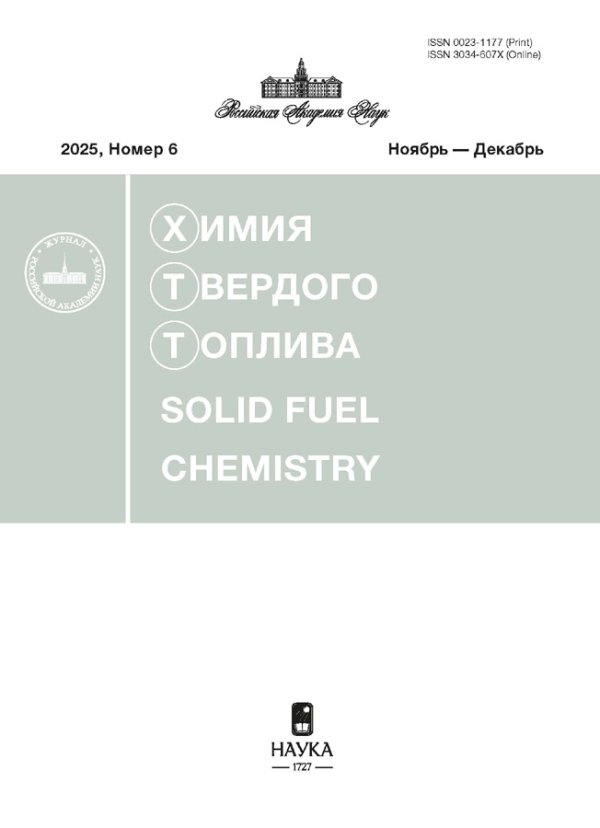Электродуговой синтез карбида титана с применением углерода, полученного при термической конверсии отходов пищевой промышленности
- Авторы: Свинухова А.А.1, Янковский С.А.1, Мисюкова А.Д.1, Пак А.Я.1
-
Учреждения:
- ФГАОУ ВО НИ ТПУ
- Выпуск: № 3 (2024)
- Страницы: 49-58
- Раздел: Статьи
- URL: https://gynecology.orscience.ru/0023-1177/article/view/677494
- DOI: https://doi.org/10.31857/S0023117724030073
- EDN: https://elibrary.ru/NBYDRG
- ID: 677494
Цитировать
Полный текст
Аннотация
Приведены результаты получения карбида титана безвакуумным электродуговым методом с применением различного рода биоуглерода, полученного классическим пиролизом отходов биомассы, таких как цедра мандарина, цедра помело, банановая кожура, скорлупа кедровых орехов, скорлупа грецких орехов. Анализ рентгеновских дифрактограмм синтезированных материалов показал повторяемость эксперимента с получением дифракционных максимумов, указывающих на формирование кубической структуры карбида титана. Анализ термического окисления полученных порошков показал, что до 1000°С процесс протекает достаточно медленно, но с повышением температуры скорость окисления существенно увеличивается. Установлено, что при термическом нагреве в окислительной среде масса исследуемых порошков карбида титана, полученных с использованием различных видов углерода, увеличивается, что подтверждает термогравиметрический анализ.
Ключевые слова
Полный текст
Об авторах
А. А. Свинухова
ФГАОУ ВО НИ ТПУ
Автор, ответственный за переписку.
Email: aag109@tpu.ru
Инженерная школа энергетики
Россия, Томск, 634050С. А. Янковский
ФГАОУ ВО НИ ТПУ
Email: jankovsky@tpu.ru
Инженерная школа энергетики
Россия, Томск, 634050А. Д. Мисюкова
ФГАОУ ВО НИ ТПУ
Email: adm14@tpu.ru
Инженерная школа энергетики
Россия, Томск, 634050А. Я. Пак
ФГАОУ ВО НИ ТПУ
Email: ayapak@tpu.ru
Инженерная школа энергетики
Россия, Томск, 634050Список литературы
- Gusev A.I. // Russian Chemical Reviews. 2020. V. 71. № 6. P. 439–463.https://doi.org/ 10.1070/rc2002v071n06abeh000721
- Syamsai R., Kollu P., Kwan Jeong S., and Nirmala Grace A. // Ceram. Int. 2017. V. 43. № 16. P. 13119–13126.https://doi.org/10.1016/J.CERAMINT.2017.07.003
- Luo Y., Yang C., Tian Y. et al. // J. Power Sources. 2020. V. 450. P. 227694.https://doi.org/10.1016/J.JPOWSOUR.2019.227694
- Dong Q., Huang M., Guo C., Yu G., and Wu M. // Int. J. Hydrogen Energy. 2017. V. 42. № 5. P. 3206–3214. https://doi.org/10.1016/J.IJHYDENE.2016.09.217
- Ghidiu M., Lukatskaya M.R., Zhao M.-Q., Gogotsi Y., and Barsoum M.W. // Nature. 2014. V. 516.https://doi.org/10.1038/nature13970
- Lin S.Y. and Zhang X. // J. Power Sources. 2015. V. 294. P. 354–359.https://doi.org/10.1016/J.JPOWSOUR.2015.06.082
- Ghosh S., Ranjan P., Kumaar A., Sarathi R., and Ramaprabhu S.// J Alloys Compd. 2019, vol. 794, p. 645–653.https://doi.org/10.1016/J.JALLCOM.2019.04.299
- Kunkel C., Viñ F., Ramírez P.J., Rodriguez J.A., and Illas F. // J. Phys. Chem. 2018. V. 123. P. 7567–7576.https://doi.org/10.1021/acs.jpcc.7b12227
- Amutio M., Lopez G., Aguado R., Bilbao J., and Olazar M. // Energy and Fuels. 2012. V. 26. № 2. P. 1353–1362. https://doi.org/10.1021/EF201662X
- Zhang Z., Li Yi., Luo L., et al. // Renew Energy. 2023. V. 202. P. 154–171.https://doi.org/10.1016/J.RENENE.2022.11.072
- Vuppaladadiyam A., Vuppaladadiyam S., Awasthi A. et al. // Bioresour Technol. 2022. V. 364.https://doi.org/10.1016/J.BIORTECH.2022.128087
- Blesa M.J., Miranda J.L., Moliner R., et al. // J. Anal. Appl. Pyrol. 2003. V. 70. № 2. P. 665–677.https://doi.org/10.1016/s0165-2370(03)00047-0
- Hilaluddin S., Mondal Sh. Rakhshit et al. // Bioresour Technol. 2023. V. 376.https://doi.org/ 10.1016/J.BIORTECH.2023.128910
- Tintner J., Preimesberger Ch., Pfeifer Ch. et al. // Ind. Eng. Chem. Res. 2018. V. 57. № 46. P. 15613–15619. https://doi.org/10.1021/acs.iecr.8b04094
- Zhang L., Li S., Li K., and Zhu X. // Energy Convers Manag. 2018, V. 166. P. 260–267.https://doi.org/ 10.1016/J.ENCONMAN.2018.04.002
- Singh S. and Srivastava S. // Procedia Comput. Sci. 2020. V. 173. P. 272–280.https://doi.org/ 10.1016/J.PROCS.2020.06.032
- Cheng J., Hu S.C., Sun G.T., Geng Z.C., and Zhu M.Q. // Ind. Crops Prod. 2021. V. 170. P. 113690.https://doi.org/10.1016/J.INDCROP.2021.113690
- Adelawon B.O., Latinwo G.K., Eboibi B.E., Agbede O.O., and Agarry S.E. // Chem. Eng. Comm. 2021. V. 209, № 9. P. 1246–1276.https://doi.org/10.1080/00986445.2021.1957851
- Yu S., Wang L., Li Q., Zhang Y., and Zhou H.// Materials Today Sustainability. 2022. V. 19. P. 100209.https://doi.org/ 10.1016/J.MTSUST.2022.100209
- Wang S., Dai G., Yang H., and Luo Z.// Prog. Energy Combust. Sci. 2017. V. 62. P. 33–86.https://doi.org/10.1016/J.PECS.2017.05.004
- Demirbaş A. and Arin G. // Enerdy Sources. 2010. V. 24. № 5. Р. 471–482.https://doi.org/ 10.1080/00908310252889979
- Cao Z., Hu Sh., Yu J., et al. // J. Environ. Chem. Eng. 2022. V. 10. № 5.https://doi.org/10.1016/J.JECE.2022.108245
- Sheldon R.A. // Green Chemistry. 2014. V. 16. № 3. Р. 950–963.https://doi.org/10.1039/C3GC41935E.
- Rosas J.M., Berenguer R., Valero-Romero M.J., Rodríguez-Mirasol J., Cordero T.// Front Mater. 2014. V. 1. https://doi.org/10.3389/fmats.2014.00029
- Rasaki S.A., Zhang B., Anbalgam K., Thomas T., and Yang M.// Progress in Solid State Chemistry. 2018. V. 50. P. 1–15.https://doi.org/ 10.1016/J.PROGSOLIDSTCHEM.2018.05.001
- Cho D., Hoon Park J., Jeong Y., and Lak Joo Y. // Ceram Int. 2015. V. 41. № 9. Р. 10974–10979.https://doi.org/ 10.1016/J.CERAMINT.2015.05.041
- De Bonis A., Santagata A., Galasso A., Laurita A., and Teghil R. // J. Colloid Interface Sci. 2017. V. 489. P. 76–84. https://doi.org/10.1016/j.jcis.2016.08.078
- Li J., Ye J. // Int. J. Refract Met. Hard. Mater. 2023. V. 115. № 106215.https://doi.org/10.1016/j.ijrmhm.2023.106215
- Zhang C., Loganathan A., Boesl B., Agarwal A. // Coatings. 2017. V. 7.https://doi.org/10.3390/coatings7080111
Дополнительные файлы












